Growing bamboo can be an immensely enjoyable and satisfying hobby. It’s a hobby that requires you to learn a whole lot about the vast world of bamboo, and one that will involve a great deal of decision-making. Two of the biggest decisions are always going to be: what bamboo should I buy next, and where should I plant it? There will always be restrictions based on your climate, the size and layout of your garden, and your own personal preferences. And inevitably, there are going to be shady corners of the garden where you’re just not sure what to plant. So you might ask, can I grow bamboo in the shade? And if so, which varieties will be best?
Yes, you can grow bamboo in the shade. And there are certainly some bamboo species that prefer more shade than others. But it will also depend on your climate. In very hot regions, most bamboo will benefit from at least a bit of shade. In colder climates, you will need to be more selective about what goes in the shade. Generally, some of the most shade-loving varieties of bamboo belong to the genera Fargesia and Borinda. Shorter, ground cover types of bamboo are also going to tolerate more shade, namely genera like Pleioblastus, Sasa and Sasaella.
In the following article — first published in August 2020 and most recently updated in March 2024 — we’ll go into more depth about growing bamboo in the shade, and identify some specific varieties that are most likely to perform better under those conditions.
| Botanical name | Common name | Brief description |
| Borinda fungosa | Chocolate bamboo | Clumping bamboo with burgundy culms, 15-25 feet tall |
| Chimonobambusa tumidissinoda | Walking Stick | Running bamboo with interesting nodes, 10-30 feet tall |
| Fargesia papyrifera | Blue Dragon | Cold hardy, clumping bamboo with colorful culms |
| Himalayacalamus hookerianus | Himalayan Blue | Graceful, clumping bamboo, colorful culms 12-18 feet tall |
| Indocalamus tessellatus | Giant Leaf | Short, compact, clumping bamboo with large leaves |
| Pleioblastus pygmaeus | Dwarf fern leaf | Dwarf, running bamboo, green leaves, pencil-sized culms |
| Pseudosasa japonica | Arrow bamboo | Vigorous runner, 10-15 feet tall, cold hardy to 0º F |
| Sasa veitchii | Kuma bamboo grass | Dwarf bamboo, running variety, deep green leaves |
| Sasaella masamuneana | Albostriata | Running ground cover bamboo with white stripes |
Ins and outs of growing bamboo in the shade
There are a few reasons why you might want to plant bamboo in the shade. It could be a matter of necessity, based on limited sunlight in your garden. Or if you live in the desert, it might simply be advisable to give your bamboo a little shelter from the beating sun. Or you might just be attracted to a certain variety of bamboo that prefers less sunlight.
The fact is, bamboo is a grass, and like most grasses, bamboo needs a lot of sunlight. Plants use chlorophyll and photosynthesis to turn sunlight into food, and as such, sunlight is essential. Plants don’t grow in the dark. Sunlight also has a way of deterring some of those shade-loving insects that like to dwell on indoor plants and in the cooler corners of the garden.
Some plants have less chlorophyll than others, and that’s true of certain bamboos as well. Less chlorophyll means the vegetation will be less green, and it often means they will want less sunlight. Indirect sunlight will be enough to satisfy the appetite of their limited chlorophyll. Consequently, you’ll find that some of the more shade-tolerant bamboos have pale and blueish hues in the leaves, and others have white stripes. These are characteristics that can add interest to an otherwise deep green garden. But you can also find shade-loving bamboo with most vibrant, green foliage.
And if you’re trying to grow bamboo in a desert, where sunshine is overly abundant and water is scarce, a little shade will help them to conserve their water supply and to avoid overheating.
Varying amounts of shade and sunlight can also affect other features of your bamboo plant. Extra shade will usually affect the color of the leaves, sometimes resulting in deeper greens. It can also bring out different colors in the culms, stunning shades of blue, red or purple, depending on the species. More or less shade can change or amplify the stripes on variegated bamboos as well.
Finally, culm internodes tend to grow longer when bamboo is in the shade. It is easiest to observe all these interesting differences when one part of a bamboo plant gets more shade than another part of the same plant. So keep an eye on all corners of your garden, and see what kind of surprises turn up.
Prepare yourself! Take a look at some essential tools on our recommended list of bamboo gardening supplies.
Best types of bamboo for the shade
A great variety of bamboos will grow very well in the shade. And the ideal amount of shade, whether full or partial, will depend on other weather factors in your locality. But if you’re looking for some bamboo to plant in one of your shady garden corners, the following list will give you a great place to start.
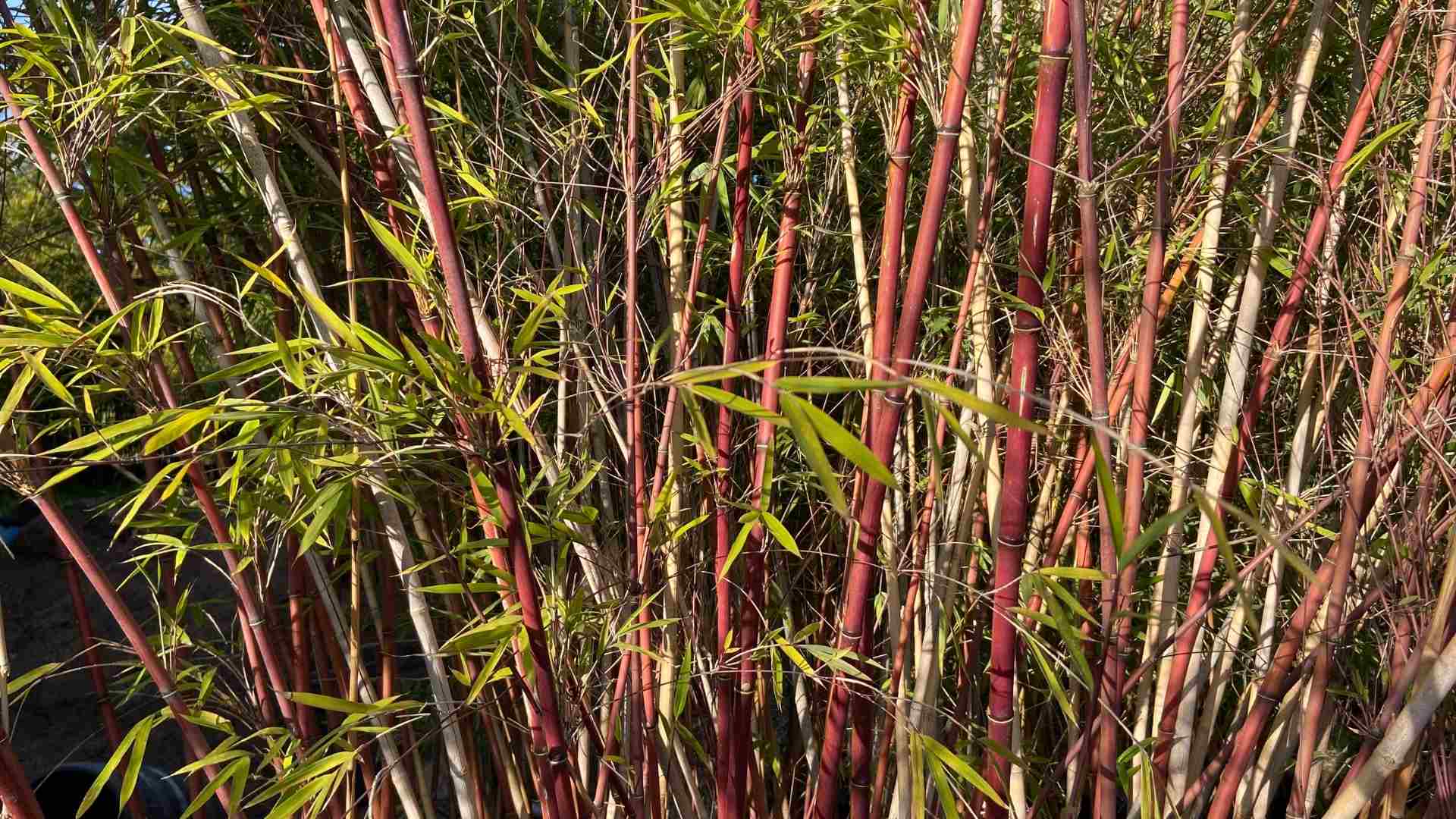
Genus Borinda
This is an unusual genus of clumping bamboo with just eight species. Until recently, members of Borinda were classified as either Fargesia or Yushania. Native to the Himalayan regions of Bhutan, Nepal and southern China, these are generally a cold hardy, shade-tolerant and very decorative assortment of bamboos.
Some of the most interesting and attractive species of Borinda include Borinda fungosa, also called “Chocolate Bamboo”, a weeping variety with deep reddish-brown culms, and B. papyrifera with its powdery blue culms. B. boliana is one of the largest bamboos in this genus, growing 20-30 feet tall, with gracefully arching culms.
Most Borinda species prefer cooler climates, and about a half day of sun. They are generally cold-hardy down to around 10º F. Not recommended for hot, southern climates.
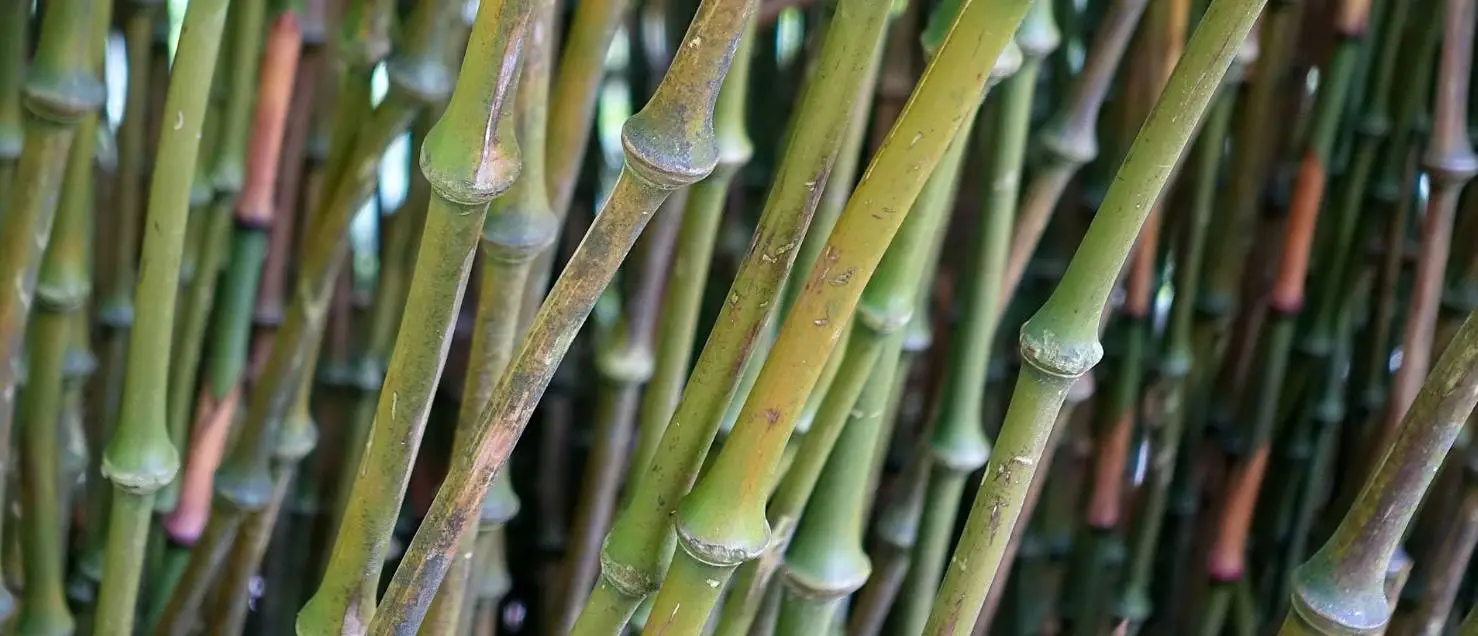
Chimonobambusa tumidissinoda
The unusually pronounced nodes of Chimonobambusa tumidissinoda have made it a special choice for crafts, especially walking sticks, and hence its common name, Walking Stick Bamboo. In addition to the shapely culms, this species also has very delicate and lacy leaves, producing a very elegant and unique appearance.
This is a running variety, but not a terribly aggressive one. It’s not easy to come by, but it makes a fine addition to any bamboo garden. Walking Stick bamboo can grow 10 to 20 feet tall and is cold hardy down to 5º or 10º F. This makes it a good option for many areas, and it definitely prefers to grow in the shade.
Close cousin to Walking Stick Bamboo, Square Bamboo (Chimonobambusa quagrangularis) has similar requirements and characteristics, and will also do well in the shade. The angular shape of the culms makes this species especially interesting.
As with any running bamboo, we strongly suggest using a rhizome barrier to prevent the plant from overtaking your garden. Check out our recommended list of Bamboo Gardening Supplies.
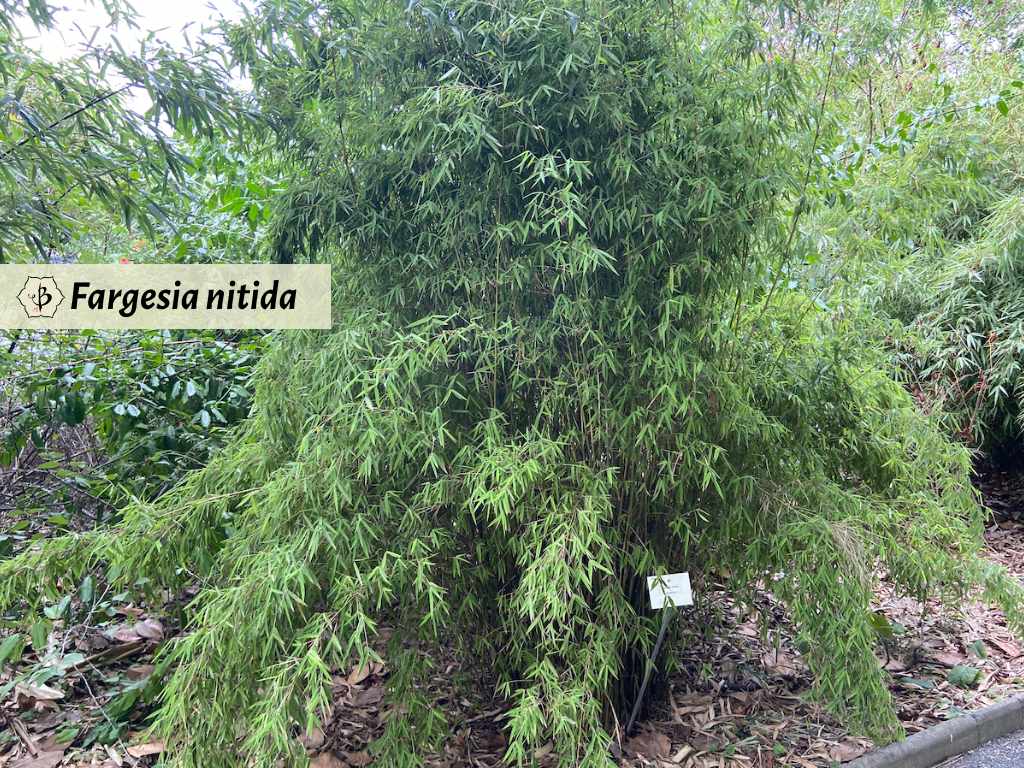
Genus Fargesia
The Chinese and montane genus Fargesia includes several dozen species of bamboo. They are most notable for being clumping bamboos which are also cold-hardy. Most cold hardy bamboos tend to be runners, so this is a rather unusual combination. In addition to being adaptable to cold climates, many varieties of Fargesia also do very well in the shade. Many species grow indigenously in higher altitudes on the eastern slopes of the Himalayas. Some of the more popular species include Fargesia murielae, F. nitida, F. papyrifera and F. rufa.
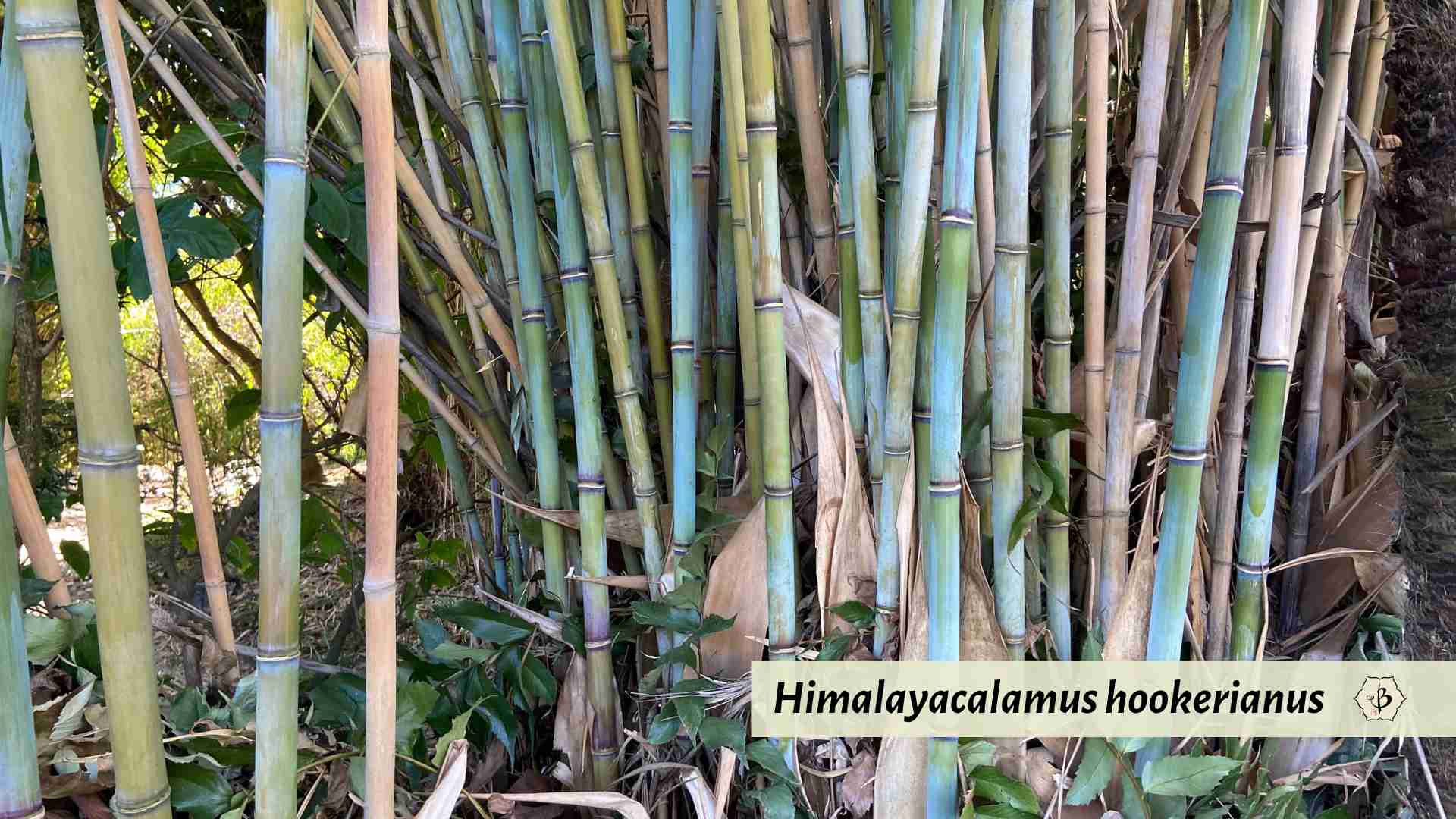
Himalayacalamus hookerianus
The richly colored, powdery blue culms give this bamboo an especially attractive appearance. Indigenous to the mountains of China, it also does well in warmer and subtropical regions. No surprise then that it’s commonly known as Himalayan Blue.
Native to southern latitudes and high altitudes, H. hookerianus does especially well in the shade, particularly when grown in hotter regions. More shade will also cause the plant to produce bluer culms, which most gardeners consider desirable. This is a clumping variety that can get 20-30 feet tall.
For further enjoyment, the fresh shoots of Himalayan Blue are edible and are said to be quite tasty.
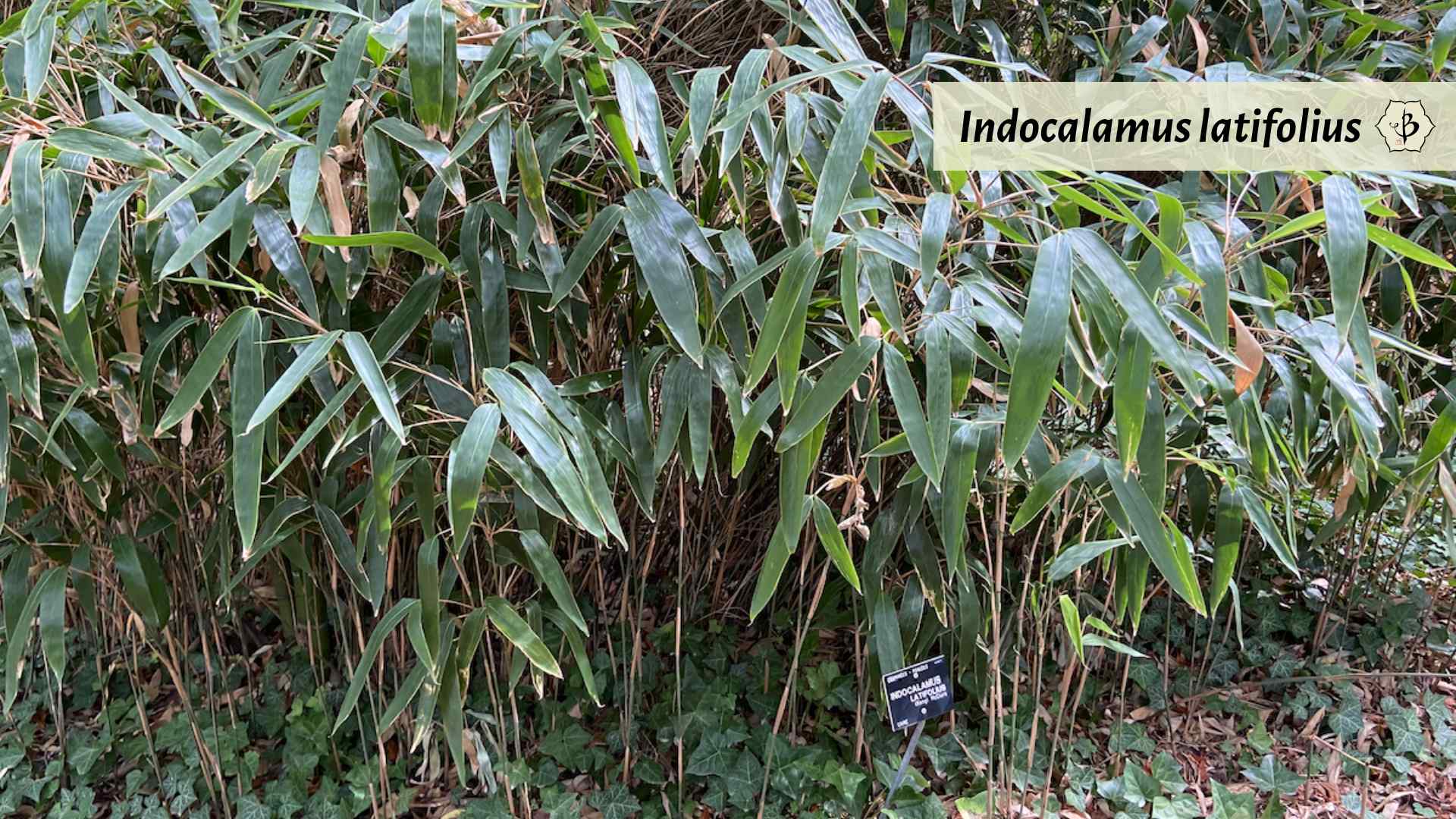
Indocalamus tessellatus
This exceptional species of bamboo makes a fabulous addition to any enthusiast’s collection. Often referred to as Giant Leaf Bamboo, it has the largest leaves of any bamboo variety. While the plant itself only gets about 6-8 feet tall, the leaves have been known to grow as much as 2 feet long and 4 inches wide.
The gigantic leaves make for a bushy appearance, also useful as an effective and eye-catching privacy hedge. An especially good choice when a low hedge is all you need. The plant is a runner, but not very aggressive. As a runner, it’s also quite cold-hardy, down to about -10º F. And it loves to grow in the shade.
Other members of the genus, such as Indocalamus latifolius, have similar properties, making them suitable for a low hedge. They have smaller culms growing close together, and dense foliage, although the leaves aren’t quite as large.

Genus Pleioblastus
A popular genus of bamboo that includes a few dwarves, semi dwarves and striped species, these are vigorous runners and also fairly cold hardy. For the smaller, more shade-tolerant species, look to P. pygmaeus, P. variegatus, and P. fortunei. These modestly sized bamboos can serve as great companion plants under a shady canopy, among larger shade-producing bamboos, Mugo pines and Japanese maples. But be careful to plant a root barrier, or else be prepared to see them spread.
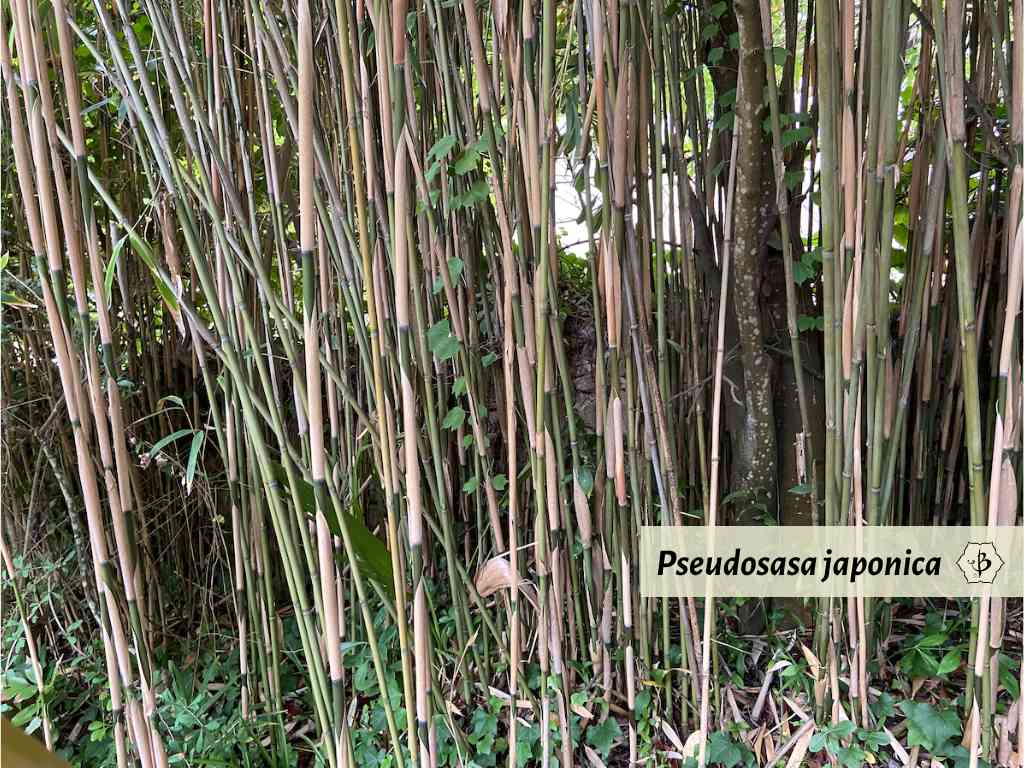
Pseudosasa japonica
A very popular variety, Pseudosasa japonica earned the nickname Arrow Bamboo from its long, strong, straight poles, which Samurai warriors once used to make arrows. Today it’s a great choice for planting in shady corners of the garden. Also, though technically classified as a runner, it tends not to spread quite as aggressively as some running bamboo. The broad green leaves also make this a very vibrant and attractive specimen.
Arrow bamboo can tolerate shady areas, especially in a hot, dry habitat. It also likes to be well watered. So try to keep it in a shady area that gets a lot of water runoff. More shade tends to make the leaves turn a deeper shade of green, which looks very pretty.
This is an excellent candidate for privacy screens as it grows thick and dense. Its height, usually about 12 to 16 feet, makes it more manageable as well. An especially good choice for privacy hedges with height restrictions.

Genus Sasa
This is a genus of compact, running bamboo of Japanese origin, including several cold-hardy varieties. Typical of dwarf bamboos, which usually grow under some forest canopy, most species of Sasa will do very well in the shade. Keep an eye out for S. veitchii with its luscious deep green foliage, or S. tsuboiana, a particularly robust ground cover that can get 5 or 6 feet tall.
If you’re looking for modestly-sized bamboo with a fascinating backstory, be sure to check out “Hiroshima Bamboo.” Hibanobambusa tranquillans, as we call it, grows well in the cold, shade, and even indoors.

Genus Sasaella
This genus of dwarfish, running bamboo is native to Japan and includes a number of small, attractive shade-loving species. Sasaella masamuneana ‘Albostriata’ is one of the most interesting members of the genus. Albostriata means white stripe, and that’s exactly what you find in the leaves of this dainty but vigorous bamboo. It can also grow a bit hairy on the culms and around the base of the leaves. It’s cold hardy to about 0º F and thrives under limited sunlight.
Sasaella ramosa, pictured below, keeps a very low stature, seldom growing much more than a foot or so tall. Don’t plan to do any construction with this delicate specimen. But it makes for delightful groundcover, shade-loving, cold-hardy and quick to spread.
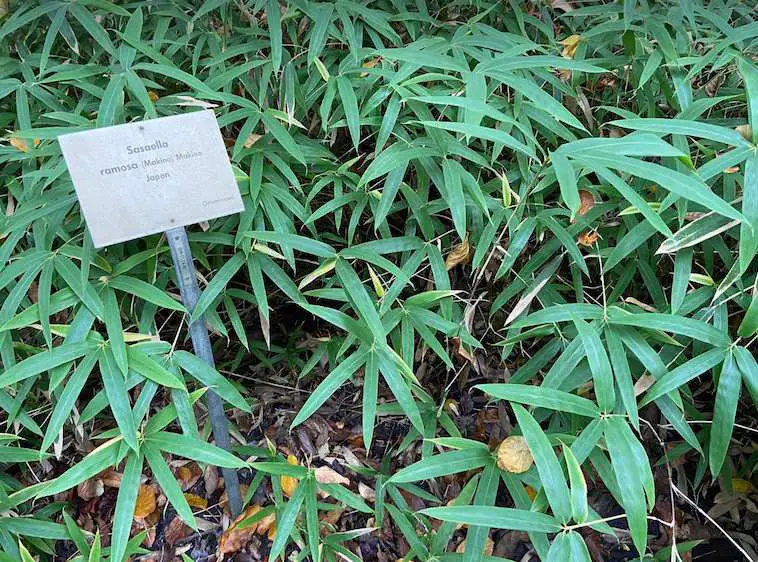
Further reading
If you enjoyed this article about growing bamboo in the shade, please consider sharing the blog post or subscribing to our mailing list. You might also be interested in some of the following links:
- Best cold-hardy bamboos for snowy climates
- Best bamboo for construction
- Drought tolerant bamboo
- Species of solid bamboo
- Bamboo for bonsai
- Growing bamboo indoors
PHOTO CREDIT: Bamboo in splintered sunlight (Retha Ferguson)

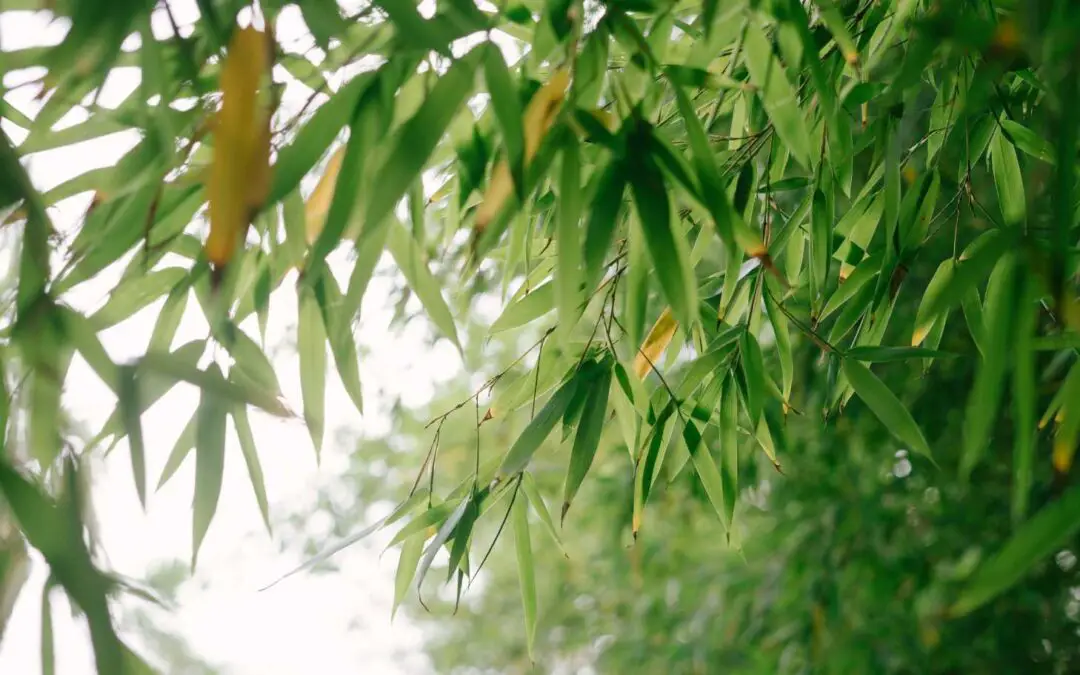



















I have a small wooded area between me and a lumber yard. Over the years the lumber yard has gotten closer to me. I have Leland Cyprus on the line for some privacy. But I would like to plant a reasonably aggressive bamboo in the woods for privacy. I live in a coastal town in Massachusetts. The bamboo would have to tolerate 30/40 light on avg. can you make any suggestions. Thank you, Walter Sullivan
Some variety of Phyllostachys would probably do best in that situation. They tend to be aggressive spreaders, but given your climate and the shade, they should grow a little slower. Plenty of species to choose from and they’re all pretty resilient. P. nigra ‘Henon’ is a big, beautiful variety, and P. aureosulcata is a fast grower. Just make sure there’s no local ordinances against non-native/invasive species, because planting these in the open can be tough on the native habitat.
Hi, I have a very shady area of the garden that I have two large trough planters ready to grow bamboo in – with the idea of having something nice to look at and to hide ugly fence panels. I would like to grow some ferns or spiky grasses beneath the bamboo. I’m not sure what bamboo would be best in a UK climate, in the shade, in troughs and happy to share with ferns or spiky grasses? Any ideas would be gratefully received. Thanks
I’d recommend something from the genus Fargesia. They’re very cold hardy and grow well in the shade. Also they are clumpers, so they don’t spread out too much.
I have a very shady area and would like to have a bamboo that hides the neighbor’s car and equipment. I live in Maryland, 7B, and would like an evergreen planting. I was considering Fargesia, as in a previous comment. Which species, and where can it be obtained?
If you want a clumping bamboo, then Fargesia will be your best option. Otherwise, Arrow Bamboo also makes an attractive hedge, grows fast, and not more than 10-15 feet tall. Check our directory of Bamboo Nurseries.